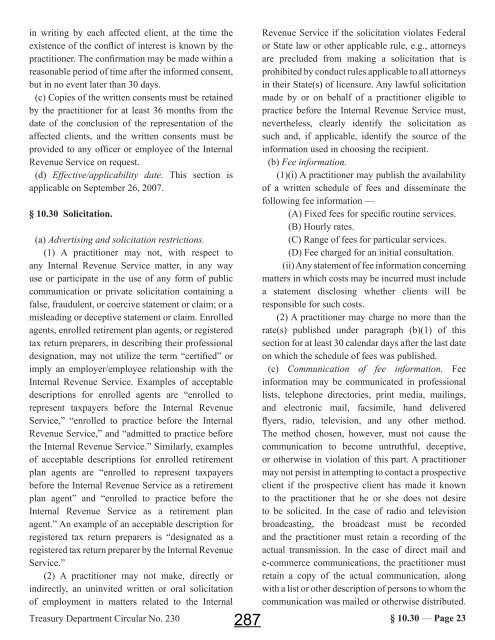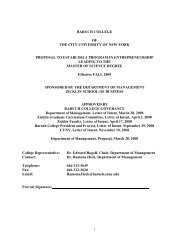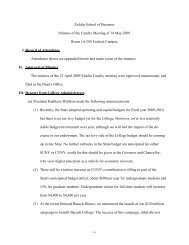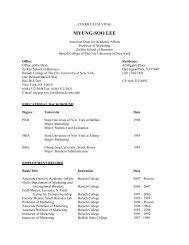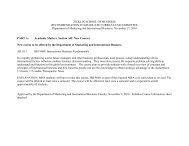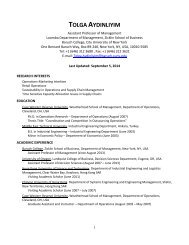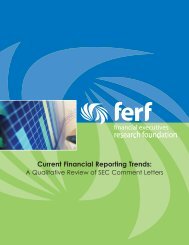Tax Seminar #3 – December 3 2012
Workbook - Zicklin School of Business
Workbook - Zicklin School of Business
You also want an ePaper? Increase the reach of your titles
YUMPU automatically turns print PDFs into web optimized ePapers that Google loves.
in writing by each affected client, at the time the<br />
existence of the conflict of interest is known by the<br />
practitioner. The confirmation may be made within a<br />
reasonable period of time after the informed consent,<br />
but in no event later than 30 days.<br />
(c) Copies of the written consents must be retained<br />
by the practitioner for at least 36 months from the<br />
date of the conclusion of the representation of the<br />
affected clients, and the written consents must be<br />
provided to any officer or employee of the Internal<br />
Revenue Service on request.<br />
(d) Effective/applicability date. This section is<br />
applicable on September 26, 2007.<br />
§ 10.30 Solicitation.<br />
(a) Advertising and solicitation restrictions.<br />
(1) A practitioner may not, with respect to<br />
any Internal Revenue Service matter, in any way<br />
use or participate in the use of any form of public<br />
communication or private solicitation containing a<br />
false, fraudulent, or coercive statement or claim; or a<br />
misleading or deceptive statement or claim. Enrolled<br />
agents, enrolled retirement plan agents, or registered<br />
tax return preparers, in describing their professional<br />
designation, may not utilize the term “certified” or<br />
imply an employer/employee relationship with the<br />
Internal Revenue Service. Examples of acceptable<br />
descriptions for enrolled agents are “enrolled to<br />
represent taxpayers before the Internal Revenue<br />
Service,” “enrolled to practice before the Internal<br />
Revenue Service,” and “admitted to practice before<br />
the Internal Revenue Service.” Similarly, examples<br />
of acceptable descriptions for enrolled retirement<br />
plan agents are “enrolled to represent taxpayers<br />
before the Internal Revenue Service as a retirement<br />
plan agent” and “enrolled to practice before the<br />
Internal Revenue Service as a retirement plan<br />
agent.” An example of an acceptable description for<br />
registered tax return preparers is “designated as a<br />
registered tax return preparer by the Internal Revenue<br />
Service.”<br />
(2) A practitioner may not make, directly or<br />
indirectly, an uninvited written or oral solicitation<br />
of employment in matters related to the Internal<br />
Treasury Department Circular No. 230<br />
287<br />
Revenue Service if the solicitation violates Federal<br />
or State law or other applicable rule, e.g., attorneys<br />
are precluded from making a solicitation that is<br />
prohibited by conduct rules applicable to all attorneys<br />
in their State(s) of licensure. Any lawful solicitation<br />
made by or on behalf of a practitioner eligible to<br />
practice before the Internal Revenue Service must,<br />
nevertheless, clearly identify the solicitation as<br />
such and, if applicable, identify the source of the<br />
information used in choosing the recipient.<br />
(b) Fee information.<br />
(1)(i) A practitioner may publish the availability<br />
of a written schedule of fees and disseminate the<br />
following fee information —<br />
(A) Fixed fees for specific routine services.<br />
(B) Hourly rates.<br />
(C) Range of fees for particular services.<br />
(D) Fee charged for an initial consultation.<br />
(ii) Any statement of fee information concerning<br />
matters in which costs may be incurred must include<br />
a statement disclosing whether clients will be<br />
responsible for such costs.<br />
(2) A practitioner may charge no more than the<br />
rate(s) published under paragraph (b)(1) of this<br />
section for at least 30 calendar days after the last date<br />
on which the schedule of fees was published.<br />
(c) Communication of fee information. Fee<br />
information may be communicated in professional<br />
lists, telephone directories, print media, mailings,<br />
and electronic mail, facsimile, hand delivered<br />
flyers, radio, television, and any other method.<br />
The method chosen, however, must not cause the<br />
communication to become untruthful, deceptive,<br />
or otherwise in violation of this part. A practitioner<br />
may not persist in attempting to contact a prospective<br />
client if the prospective client has made it known<br />
to the practitioner that he or she does not desire<br />
to be solicited. In the case of radio and television<br />
broadcasting, the broadcast must be recorded<br />
and the practitioner must retain a recording of the<br />
actual transmission. In the case of direct mail and<br />
e-commerce communications, the practitioner must<br />
retain a copy of the actual communication, along<br />
with a list or other description of persons to whom the<br />
communication was mailed or otherwise distributed.<br />
§ 10.30 — Page 23


